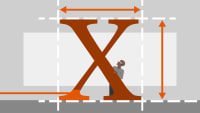Description
In this course, you will learn :
- What is typography?
- Differentiating type characteristics
- Using ornamental and decorative type
- Combining typefaces
- Using contrast and scale
- Kerning and kerning pairs
- Choosing the optimum line length
- Aligning and spacing characters, words, and paragraphs
- Understanding factors affecting legibility
- Working with three-dimensional type
- Putting type in motion
Syllabus :
1. Typographic Differentiation
- Serif vs. sans serif
- Display type vs. text type
- Type history
- Type classification
- Other type categories
- Guidelines for combining typefaces
- Using cases
2. The Language of Type
- Anatomy: Parts and shapes of type
- Size and measurements of type
- Type families: Widths, weights, and slopes
- Reviewing the terminology of type, based on function
- Working with color and tonal weight: Exercises
3. Spacing and Alignment
- Kerning and kerning pairs
- Tracking and leading
- Exploring variations in type alignment
- Hyphenation and justification
- Indents, outdents, and hanging punctuation
- Other typographic best practices
4. Touching on Type Design
- Where type begins: The mark of the hand
- Related parts and shapes: Family resemblances
- Designing a typeface
5. Legibility and Readability
- How legibility and readability differ
- Examining factors affecting legibility
- Hierarchy and functionality
- Systematized hierarchy
- Paragraphs, drop caps, and entry points
- Typographic abominations
6. Typographic Composition
- Opposing forces of typography
- The grid: A structure for containing type
- Contrast and scale
7. Thinking with Type
- Typographic expressiveness
- The emotional impact of type
- Three-dimensional type
8. Specialized Uses
- Working with numbers
- Expert characters and analphabetic symbols
- Using typography to navigate content
- Using typography to navigate the environment









